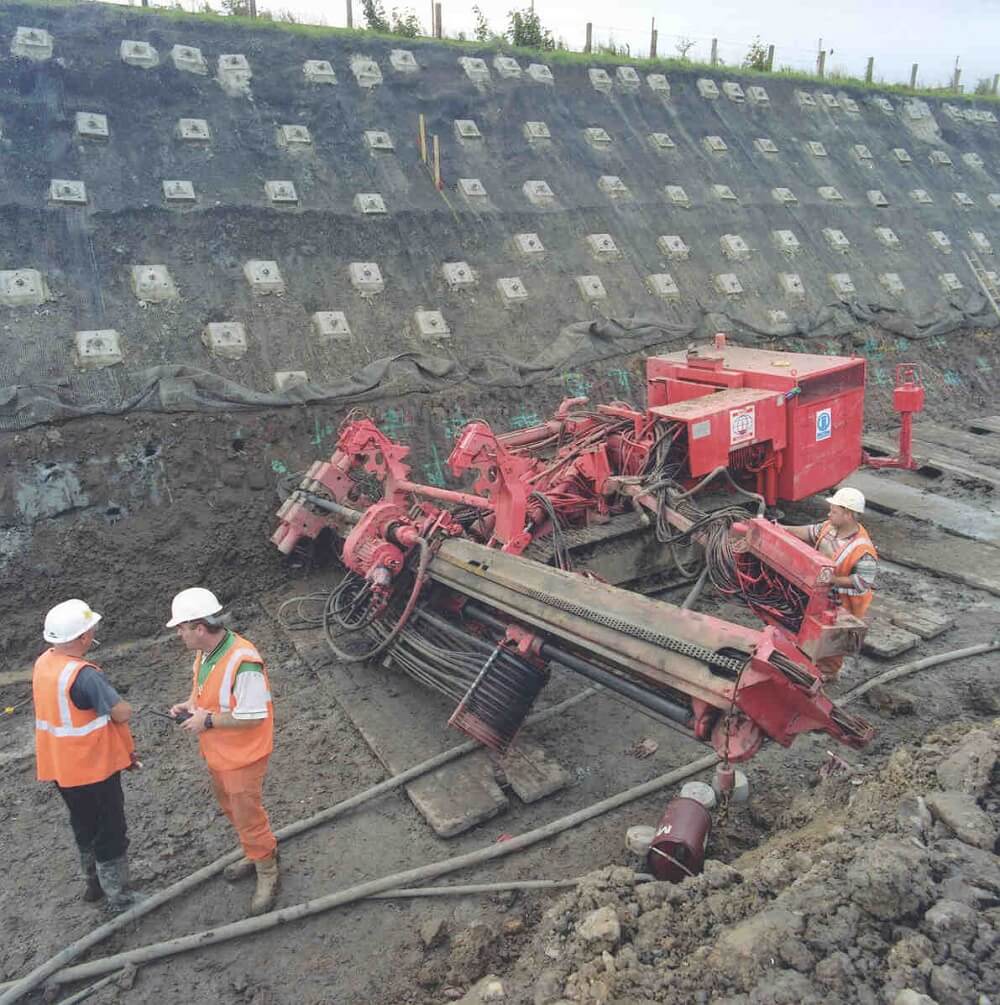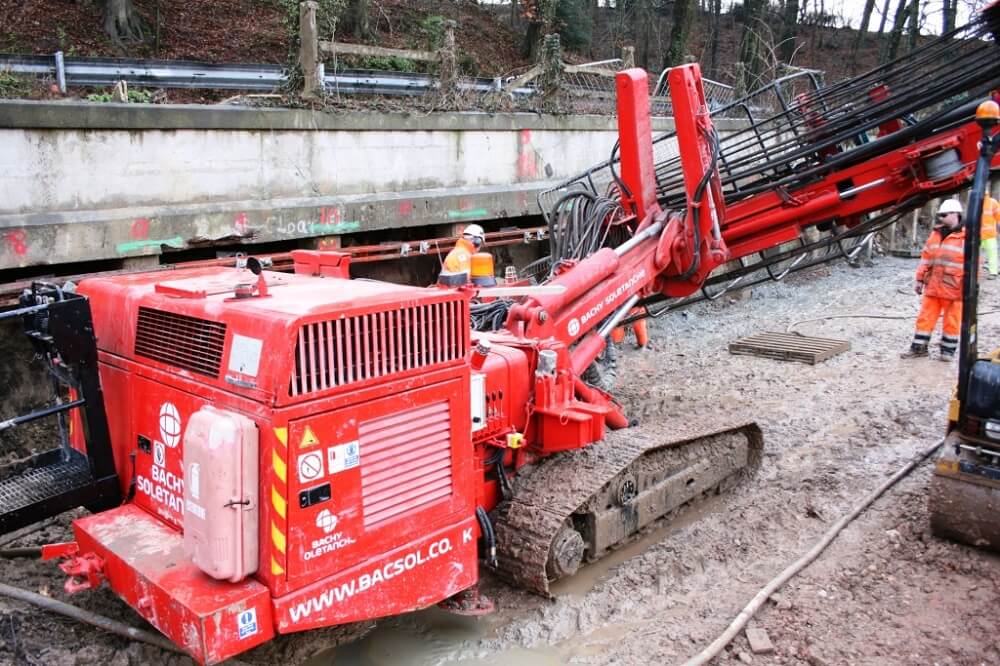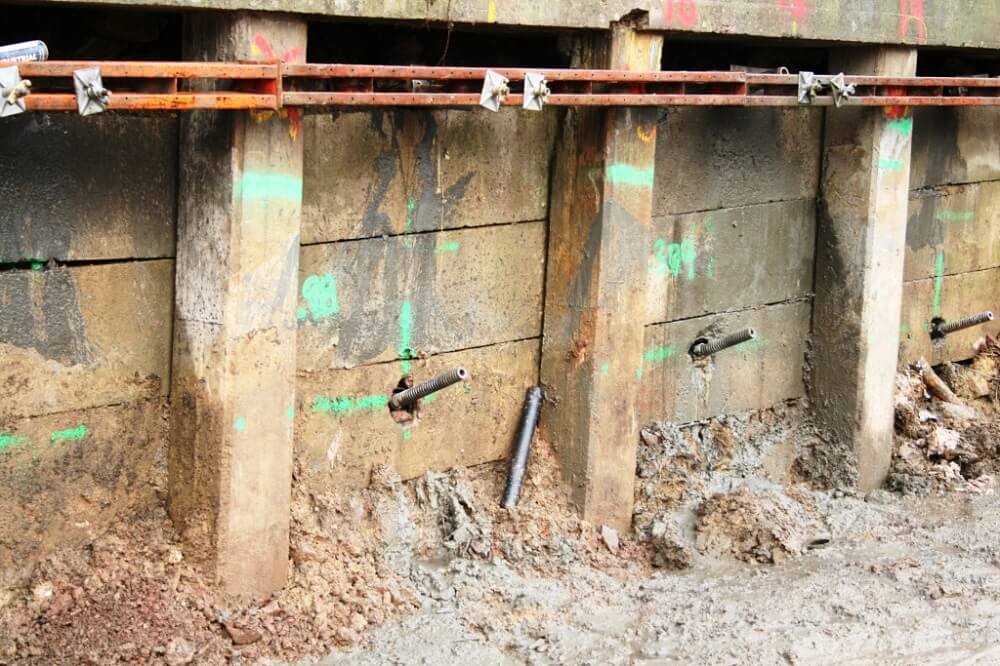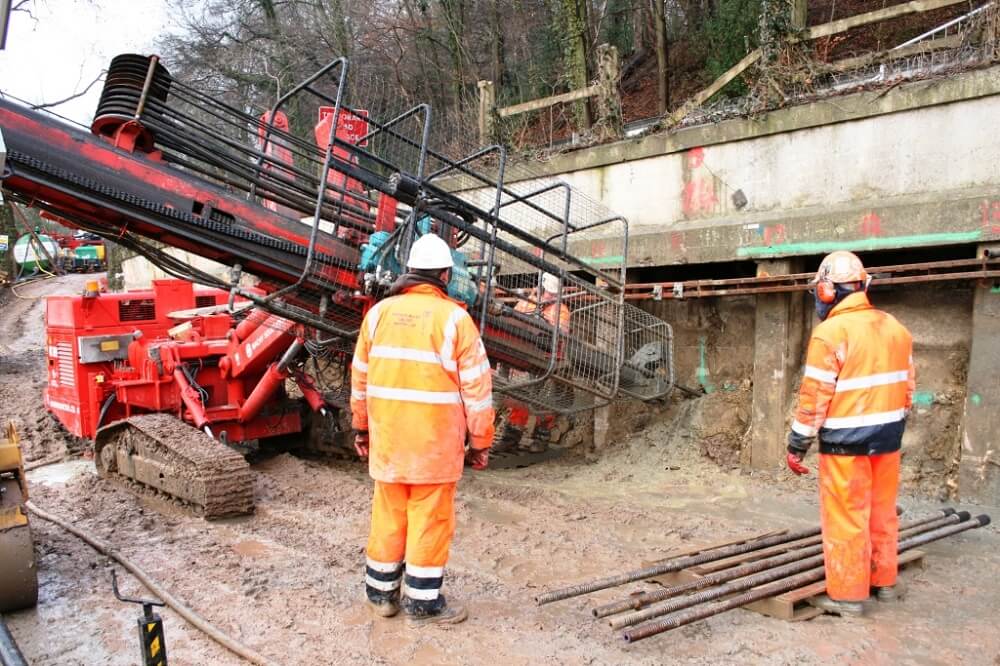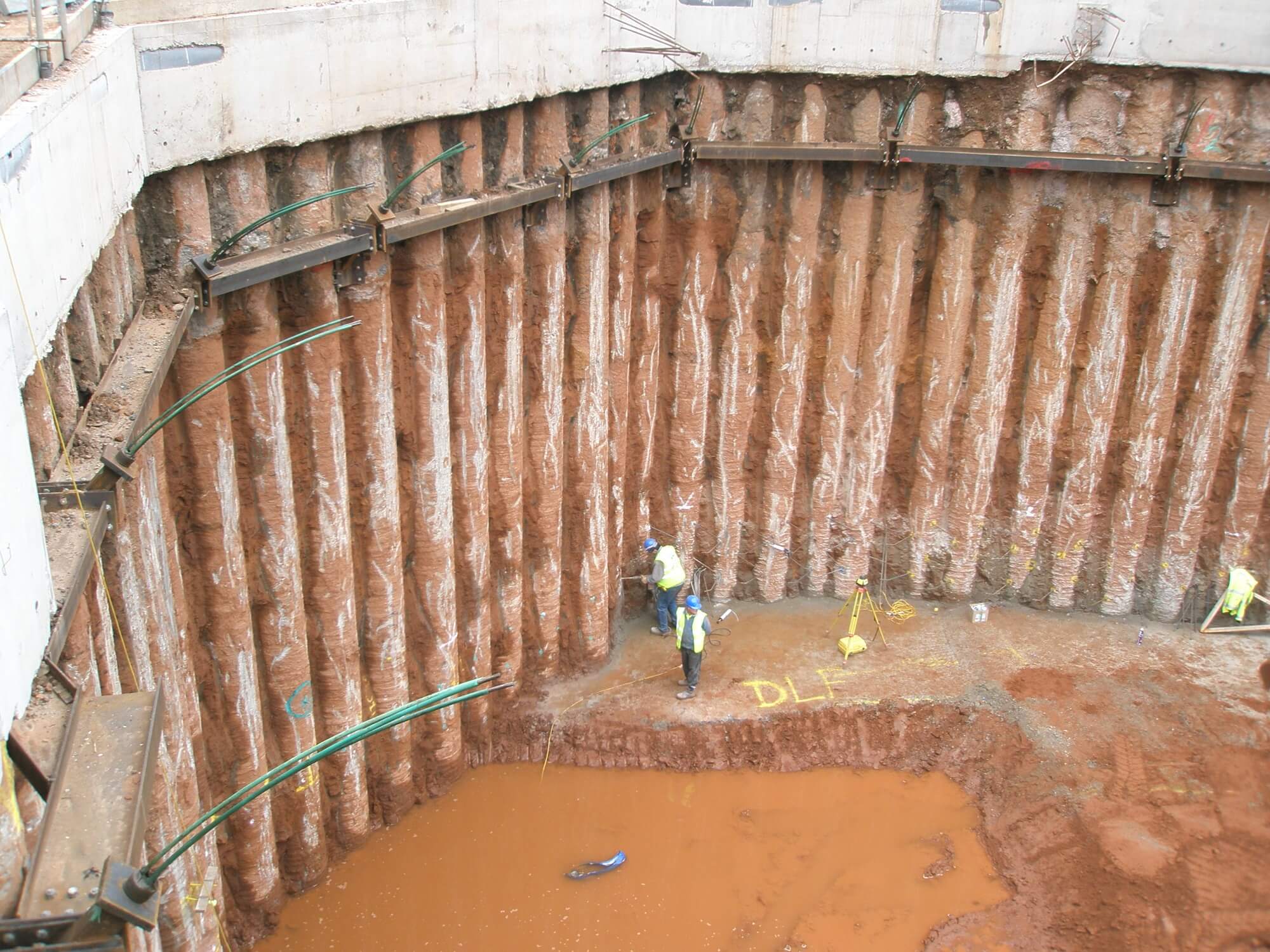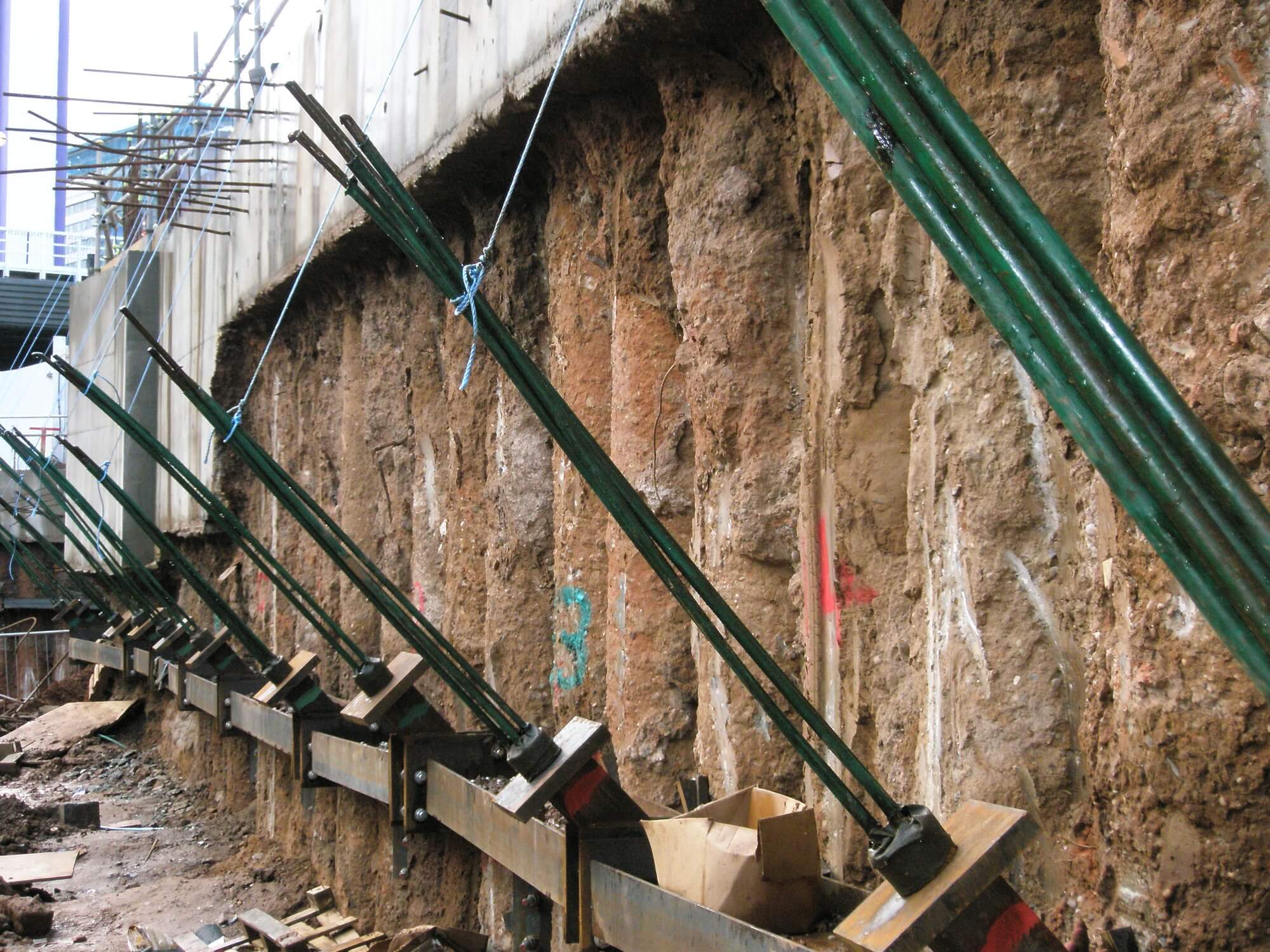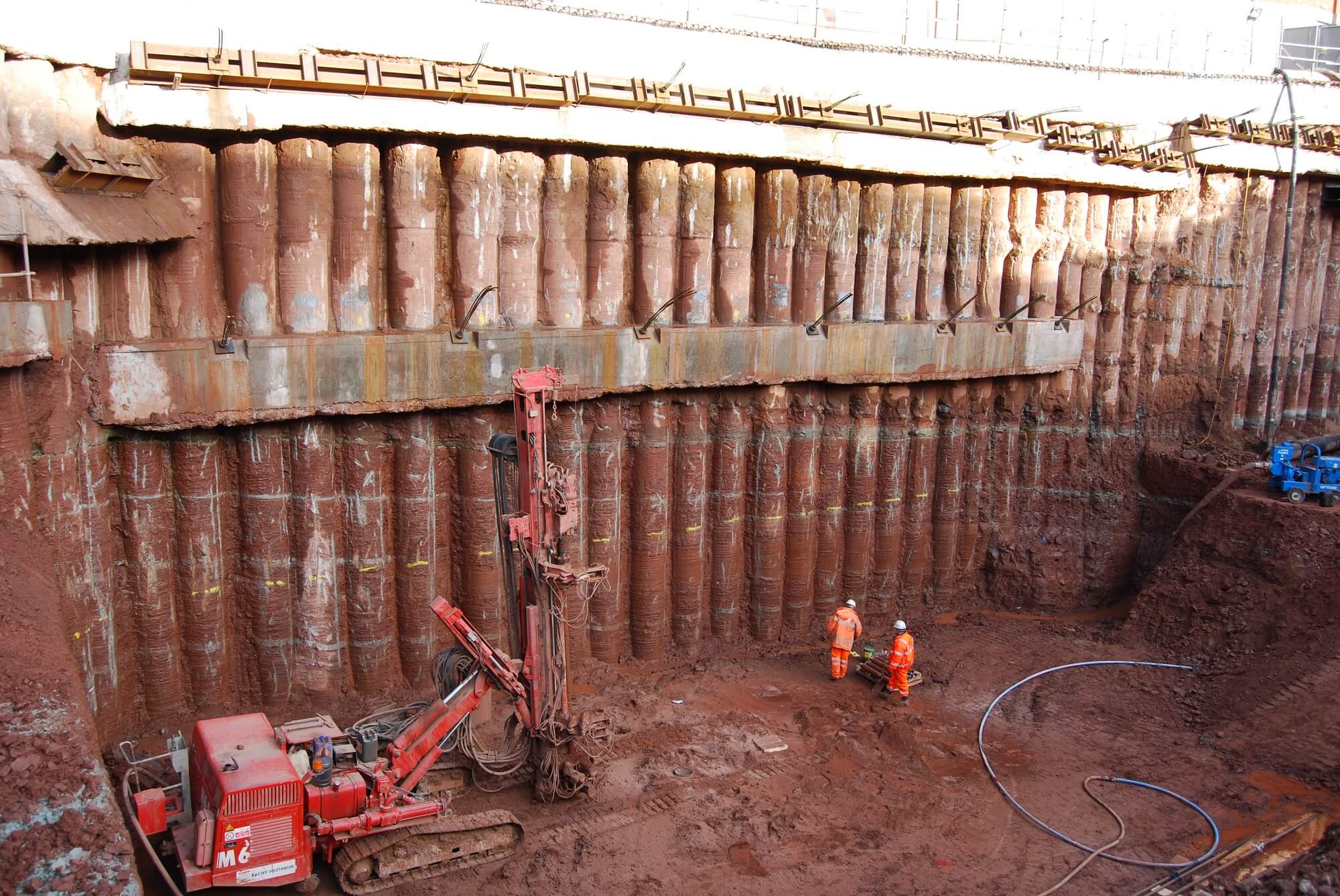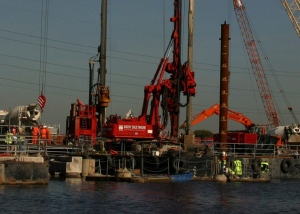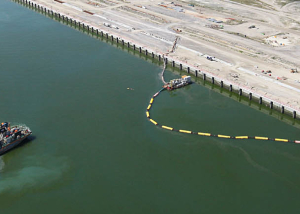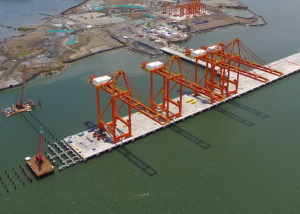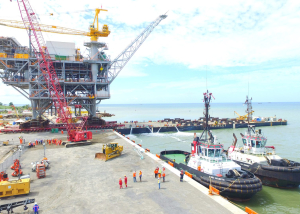Ground Anchors are a load transfer system designed to transfer the forces applied to it to a competent stratum. An anchor is generally said to be temporary if it has a lifespan of under two years and permanent if its lifespan is over two years. Fully removable anchors are readily available.
Ground anchors are used to support walls against lateral earth and water pressures in earth retaining structures, to secure landslides, rock cuts, tunnels, shafts and deep excavations, to resist tensile uplift on basements due to an elevated groundwater table or expansive soils and to resist overturning or sliding forces in dam stability projects.
HOW IT WORKS
An anchor comprises three parts:
- The head, transmitting the anchor force to the structure via the bearing plate
- The free length of tendon, from the head to the near end of the anchorage
- The grouted anchorage, which is the length of tendon by which the tensile force is transmitted to the surrounding ground through the grout.
The installation process involves pre-drilling a borehole into which the anchor tendon (strand or bar) is inserted and grouted. The grout is allowed to harden before the specified load is applied using hydraulic pumps and jacks. An anchor cap is fitted to provide overhead corrosion protection.
Capability: Anchors can be installed with bore diameters between 100mm to 273mm using various drilling techniques with applied loads ranging between passive and 2500kN+.
Advantages: Ground anchors can be used in most ground conditions and relatively fast to install. By removing the need for propping, the use of ground anchors significantly reduces congestion on site e.g. basement construction.
